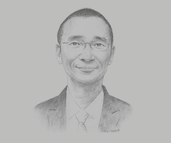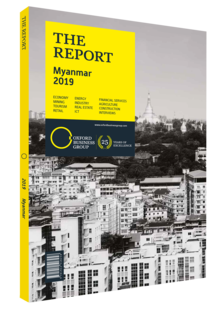Patrick Ip, Managing Director, China-ASEAN Investment Cooperation Fund : Interview

Interview : Patrick Ip
As Chinese foreign direct investment increases, which sectors of Myanmar’s economy stand to benefit most in the short to medium term?
PATRICK IP: Through the Belt and Road Initiative (BRI), China is particularly interested in investing in infrastructure and IT development in other countries, although investment is not restricted to these areas. This is not expected to be any different in ASEAN.
With respect to investment in Myanmar, Chinese developers are experienced in a number of areas, but the country is in great need of power generation: approximately one-third of the population does not have access to electricity, so there is a lot to do in this regard. Myanmar also has a very low level of road density per capita, and therefore the concession of certain infrastructure projects such as toll motorways is of great interest to most investors. In ASEAN more broadly, investments in green energy, waste management and water-treatment projects are becoming more common.
Other kinds of investment inflows to the region, and Myanmar in particular, will be targeted at labour-intensive industries. The manufacturing value chain is becoming more and more expensive in China, and therefore producers are moving to other areas in South-east Asia, where manpower is cheaper and labour union requirements are not as strict. Nonetheless, because of recent events such as the US-led trade disputes with China, the renminbi is depreciating. As a result, China’s outbound investment will tighten for the time being.
What BRI projects should be prioritised in Myanmar, and which contractual models should be followed for their implementation?
IP: When it comes to prioritised projects, we have a track record of investing in infrastructure, but this does not mean that other areas should not be considered. That said, BRI’s intention is to increase interconnectivity in the region while helping economies to grow further. That is why investing in power generation, expansion of the national power grid and water-treatment projects is a priority in Myanmar. Moreover, logistics-related initiatives are seen as extremely attractive areas for investment as these tend to have a significant impact on lowering the cost of imports and exports.
In terms of contractual models, I cannot say which one is best, as each project has different terms and conditions. However, generally speaking, I think Myanmar could consider different models and approaches to the public-private partnership (PPP) model because, in some cases, the government needs to offer certain projects under specific models due to national security issues. There are examples of other PPP models in many countries. In China, for example, the telecoms sector is not fully liberalised, while in the Philippines, public utilities are partly restricted to foreign investors. There are many other examples of such models in ASEAN.
How have Chinese entities taken environmental and social performance standards into account when identifying projects in Myanmar?
IP: We do not invest in certain industries that we consider off limits. For instance, coal mining or coal-fired power generation, timber, tobacco and alcohol production are activities we simply will not engage in due to the impact that they have on the environment and society. Along with sustainability, these are factors we seriously consider when deciding whether or not to invest in a project.
Our objectives are clear: China is economically well placed at the moment, and we want to help other countries by bringing the necessary capital and Chinese expertise into the development programmes of various countries, while establishing good relationships through win-win situations.
You have reached the limit of premium articles you can view for free.
Choose from the options below to purchase print or digital editions of our Reports. You can also purchase a website subscription giving you unlimited access to all of our Reports online for 12 months.
If you have already purchased this Report or have a website subscription, please login to continue.

